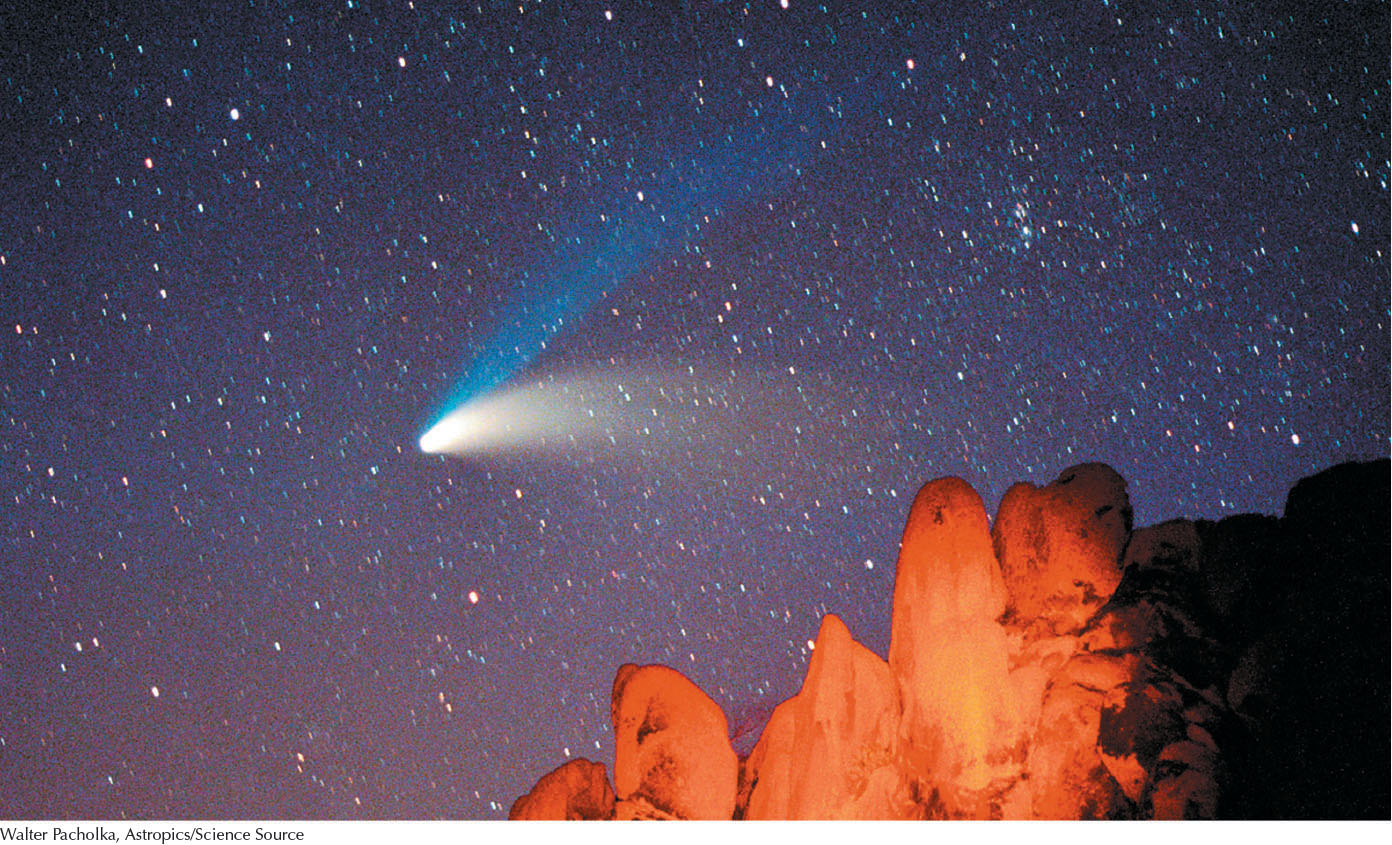275
CHAPTER [strong]9[/strong]

Vagabonds of the Solar System
WHAT DO YOU THINK?
 Are the asteroids a former planet that was somehow destroyed? Why or why not?
Are the asteroids a former planet that was somehow destroyed? Why or why not?
 How far apart are the asteroids on average?
How far apart are the asteroids on average?
 How are comet tails formed? Of what are they made?
How are comet tails formed? Of what are they made?
 In which directions do a comet’s tails point?
In which directions do a comet’s tails point?
 What is a shooting star?
What is a shooting star?
Answers to these questions appear in the text beside the corresponding numbers in the margins and at the end of the chapter.
276
Now that we have explored the properties of the planets and their moons in Chapters 7 and 8, we finish studying the objects orbiting the Sun in this chapter. In Section 5-8, we saw that astronomers have several overlapping ways of classifying the bodies orbiting the Sun. To briefly review, recall that a planet is a celestial body that (1) is in orbit around the Sun, (2) has sufficient mass for its self-gravity to pull itself into a nearly spherical shape (although rotation causes many planets to be wider at their equators than at their poles), and (3) also has enough mass for its gravitational force to clear the neighborhood around its orbit. A dwarf planet satisfies (1) and (2), but it does not have enough gravity to clear its orbital neighborhood of debris. (Note that the dwarf planet Haumea is egg-shaped, rather than being uniformly wider at its equator, like Earth. This is apparently due to Haumea’s exceptionally rapid rotation.) All objects in the solar system that are not planets, dwarf planets, or moons are called small solar system bodies (SSSBs).
Margin Question 9-1
Question
What objects are classified today as planets? What objects are classified as dwarf planets?
So far, Pluto, Ceres (also an asteroid), Eris (named after a Greek goddess), Makemake (pronounced mah-key mah-key and named after a god of the Rapa Nui people of Easter Island), and Haumea (pronounced how-may-uh and named after a goddess of Hawaii) have earned the title of dwarf planet. The latter three bodies were discovered in 2005. Dozens of other solar system objects are being evaluated for inclusion in this class. Bear in mind that as the properties of more solar system objects are pinned down, the definitions of dwarf planets and SSSBs may be refined.
In this chapter you will discover
 the properties of dwarf planets and small solar system bodies
the properties of dwarf planets and small solar system bodies
 asteroids and meteoroids—pieces of interplanetary rock and metal
asteroids and meteoroids—pieces of interplanetary rock and metal
 comets—objects containing large amounts of ice and rocky debris
comets—objects containing large amounts of ice and rocky debris
 meteors—space debris that falls through Earth’s atmosphere
meteors—space debris that falls through Earth’s atmosphere
 meteorites—space debris that lands on Earth
meteorites—space debris that lands on Earth
 the asteroid belt and the Kuiper belt, both filled with a variety of debris, including orbiting pairs of objects
the asteroid belt and the Kuiper belt, both filled with a variety of debris, including orbiting pairs of objects
 the impacts from space 250 million and 65 million years ago that caused mass extinctions of life on Earth
the impacts from space 250 million and 65 million years ago that caused mass extinctions of life on Earth
 wayward asteroids that could again threaten life on Earth
wayward asteroids that could again threaten life on Earth